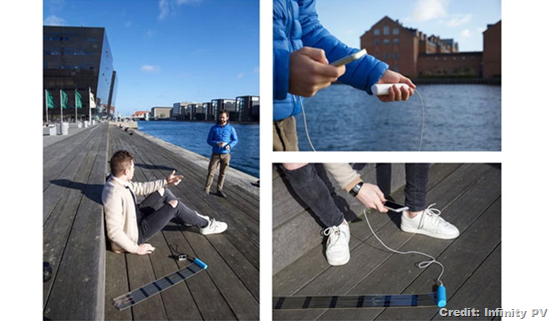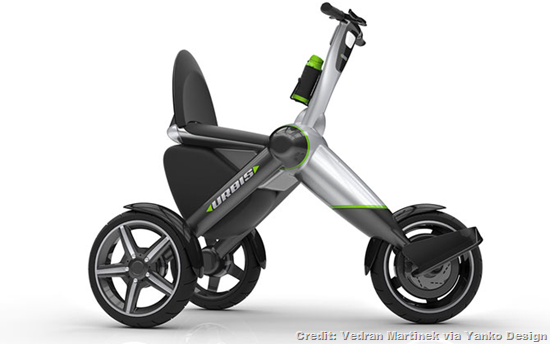
Gold foam, wired roses, 3-D art for the blind and a beautiful way to recycle plastic garbage are highlights from this week's Tasty Tech gallery.
1. Lightweight Gold
Scientists have created an incredibly lightweight gold by mixing milk protein fibres with a solution of gold salt. The fibres formed a kind of lattice to which the gold salt crystalized to. The resulting gold foam is 98 parts air and only two parts of solid material, but in total is 20-carat gold. Developer Raffaele Mezzenga, professor of food and soft materials at ETH Zurich, said the material could be used in jewellery, as a chemical catalysis and in applications where light is absorbed or reflected.
Most museums have guards to keep you away from the art. No touching! But a new Indiegogo project from UnSeen Art wants to bring touchable art to the blind. By donating to the crowd-funding campaign, backers can get a 3-D representation of the Mona Lisa, which can be kept or donated. The money raised overall will help develop a way for others to download files that can be printed by anyone with a 3-D printer.
3. Desalinate Water
A new way to remove salt from water could deliver more fresh water for everyone. Scientists from the University of Illinois used a supercomputer to test different materials and found that a membrane made from molybdenum and sulphur was able to filter up to 70 percent more water than the more popular graphene membranes. The illustration here shows a cross-section of a membrane. The molybdenum is in blue and the sulphur in yellow. It filters salt from the water on the left, leaving fresh water on the other side.
4. Burying Nuclear Waste
Finland just got the go-ahead to build a nuclear storage facility 1,300 feet underground on Olkiluoto Island. The facility is designed to last 100,000 years and will hold Finland's and Sweden's projected nuclear waste. [Video]
5. Calming Hoodie
Having a hard day at work? Sure, you could meditate or do some yoga but why not shut out the world in this stress-reducing hoodie? Zip up the Baker Miller Pink Hoodie from Vollebak and a soft, pink glow fills your field of view. The colour naturally calms you, helping you to slow down your breathing and heart rate.
6. Roll-Up Phone Charger
The company infinityPV is on their way to printing solar cell panels as thin as paper that can be rolled up in a compact device and then unrolled under the sun to charge your phone. Their Kickstarter project for the HeLi-on is already fully funded, but there's still time to get in on the action.
7. Recycle Plastic Garbage
This beautiful material comprised of swirling colours and patterns is made from milk containers, tupperware, plastic bottles, and grocery bags. It's called Müll and it comes from industrial designer Carter Zufelt, who after months of trial error found a way to use the right amount of heat and pressure to bake, twist and compress plastic garbage into a marbled material suitable for a range of applications.
8. Net Zero Home
This prefabricated home from Unity Homes was on display at the 2015 Greenbuild conference. It's a 1,620-square-foot, net-zero house that can be built in three days. Currently priced at about US$150 per square foot, the well-insulated house is designed to generate all its own energy. Watch a video here.
9. Urban Trike
The Urbis Trike from Vedran Martinek is a concept for urban mobility. It folds up into a compact package to be carried onto public transportation. When the commuter reaches her last stop, the trike can be opened up and ridden the last few blocks or miles to the final destination. An electric motor means no pollution and a built-in GPS system helps the rider navigate.
10. Wired Roses
When wired with bioelectric molecules, this garden rose conducts electricity. It was developed by scientists at Linköping University in Sweden who think that in the future, these cyberplants could be programmed to bloom on demand or generate special hormones that help it survive extreme weather conditions, such as frost or drought.










No comments:
Post a Comment
Please adhere to proper blog etiquette when posting your comments. This blog owner will exercise his absolution discretion in allowing or rejecting any comments that are deemed seditious, defamatory, libelous, racist, vulgar, insulting, and other remarks that exhibit similar characteristics. If you insist on using anonymous comments, please write your name or other IDs at the end of your message.